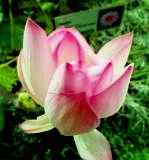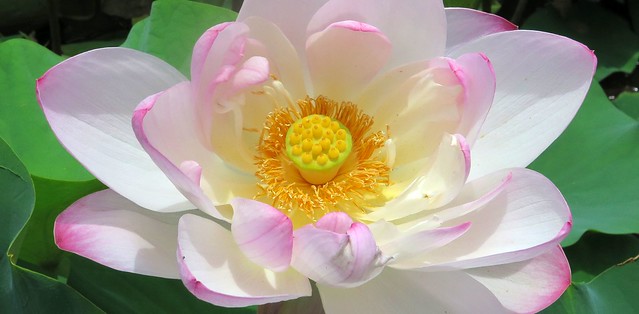Scientific name: Nelumbo nucifera Gaertn.
Family: Nelumbonaceae
Synonym: Nymphaea nelumbo L., Nelumbo speciosa Willd.
Bengali/Vernacular name: Padma, Shotodol, Komol, Raktapadma, Jolpadma, Poddo.
Tribal name: Padma phul (Chakma), Kraa-khaw-lang (Rakhaing), Kodombo-chik (Tripura).
English name: Lotus, Sacred lotus.
Description of the plant: A perennial, aquatic herb with creeping rootstocks. Leaves are raised above the water, large, rounded, peltate, and 50-90 cm wide.
Flowers solitary, pink, red, or white, and 15-25 cm in diameter, standing out of the water.
Mature fruit is formed by the enlargement of the spongy, cone-shaped structure in the center of the flower. Rich carpel (fruit and seed in one) is about 13 mm long, with a black, bony, and smooth pericarp.
Plant parts used: Leaf, flower, seed.
Ethnomedicinal uses: Juice extracted from the leaves is given in diarrhoea.
Pounded leaves applied to the body for high fever, mucous membranes, and skin irritation, and over the forehead for headache.
Paste prepared from the seeds of the plant is applied to treat skin disease and leprosy.
Decoction of flowers used for premature ejaculation.
Juice extracted from flowers, flower-stalks are used in diarrhoea, cholera, liver complaints, and fever.
Syrup made from the flowers used in cough, to check hemorrhages in bleeding piles, menorrhagia, and dysentery.
Distribution: The lotus is found in many districts, such as Dhaka, Khulna, Kishoreganj, Rajshahi, Maulvi Bazar, Sunamganj, and Nawabganj.
Is this plant misidentified? If yes, please tell us….


















